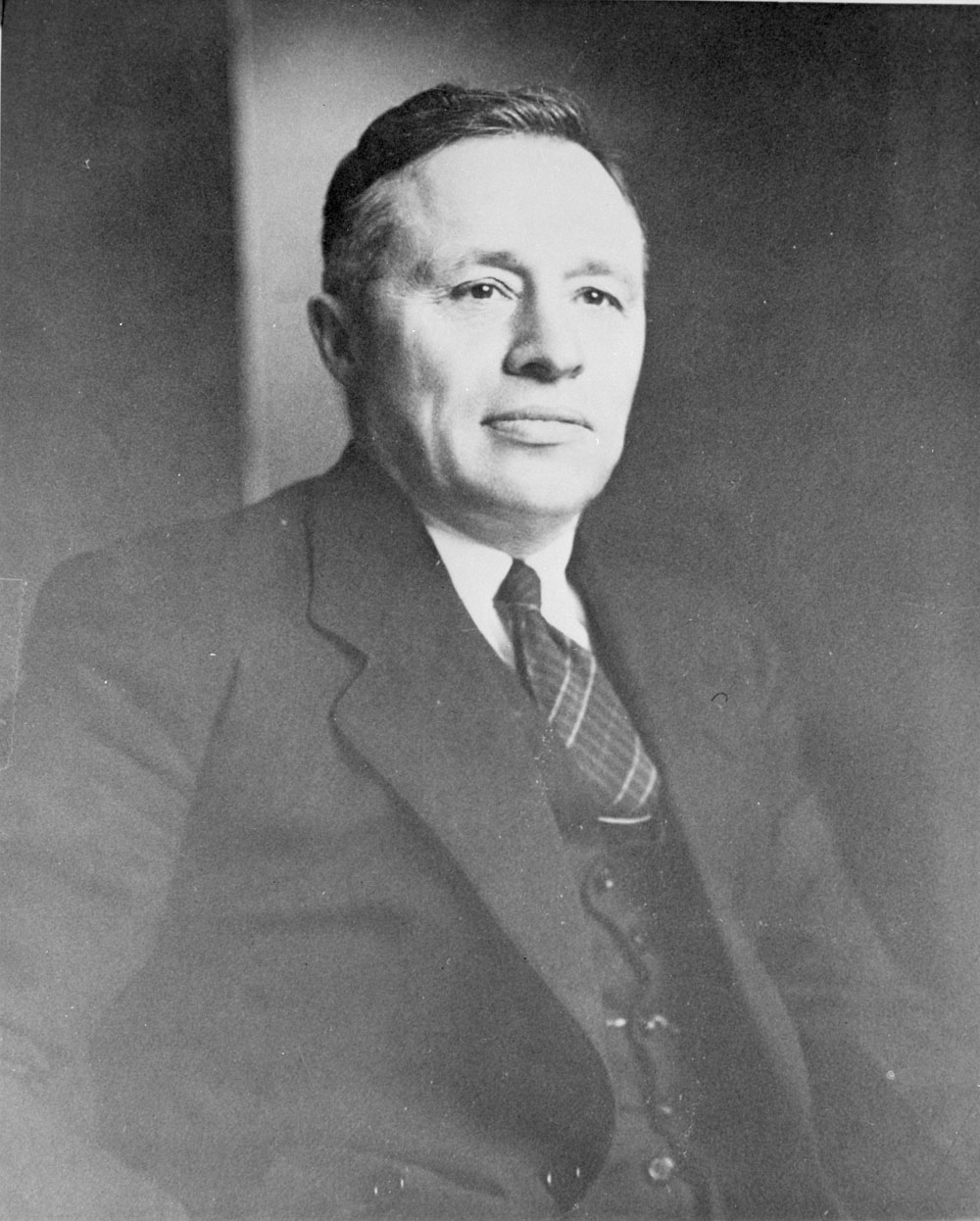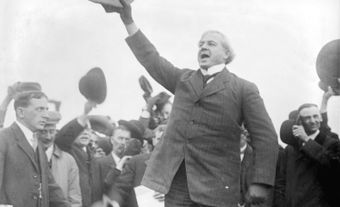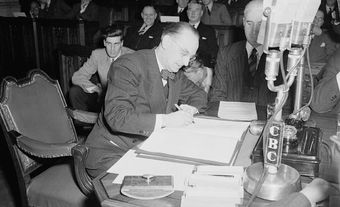The Government of Saskatchewan is led by Premier Scott Moe, leader of the Saskatchewan Party. The Saskatchewan Party, most recently elected on 26 October 2020, holds a majority of seats in the Legislative Assembly. Lieutenant-governor Russell Mirasty, a former member of the Royal Canadian Mounted Police and appointed in 2019, is Saskatchewan’s first lieutenant-governor of Indigenous ancestry. The province’s first premier, Walter Scott, began his term in 1905, after Saskatchewan joined Confederation. Key events in Saskatchewan’s political history include the election of the Co-operative Commonwealth Federation (CFF) in 1944, Canada’s first socialist government and forerunner to the New Democratic Party. The CFF implemented a system of Medicare that was later adopted nationally. More recently, Saskatchewan has seen the rise of the centre-right Saskatchewan Party, which has become the dominant political force in the province.

Provincial Government Structure
There are 61 seats in Saskatchewan’s Legislative Assembly. Representatives holding those seats are referred to as Members of the Legislative Assembly (MLAs). They meet in legislative session twice annually. There is a short, six week sitting beginning in October, and a longer spring session that begins in March. There are fixed-date elections set on four-year cycles, with the next election scheduled for the fall of 2024. Saskatchewan’s two largest cities, Saskatoon and Regina, have 16 and 13 constituencies respectively, while smaller cities, towns and rural areas have a combined total of 32 constituencies.
Confederation and Early Governments: 1905–1944
Saskatchewan officially became a province when it joined Confederation in September 1905. It was carved out of what was the North-West Territories to encompass the rich agricultural soil of the prairie parkland. The farming opportunities in the new province later made it a magnet for immigration and settlement.
Walter Scott, a Liberal, was Saskatchewan’s first premier. He was appointed by the province’s lieutenant-governor. Scott and the Liberals won a subsequent election in December 1905. Scott was premier until 1916 and was followed by a series of Liberal premiers: William Martin (1916–22), Charles Dunning (1922–26), James Gardiner (1926–29, 1934-35) and William Patterson (1935–1944). Between the beginning of Scott’s tenure in 1905 and the end of Gardiner’s tenure in 1929, the Liberals held power for 24 years. The one interruption in the Liberals’ hold on power came in 1929 with the election of Conservative leader J.T. Anderson, who was premier until 1934.

For the first quarter century of Liberal rule, the province was a hotbed of immigration. Waves of settlers from Eastern Canada and Europe flooded into Saskatchewan, establishing the province’s grain producing, agricultural economy. The extent of the immigration was such that by 1930 Saskatchewan was Canada’s third most populous province. In 1906, a year after Saskatchewan entered Confederation, the province had a population of 257,763. By 1931, it had more than tripled, reaching 921,785.
The provincial Liberal governments during that period focused on establishing and supporting the province’s agricultural economy and society. Saskatchewan’s widely dispersed farming economy created a rural pattern of small towns. As such, issues of developing a province-wide education system and support for rural and urban municipal governance were the top priorities. One issue in Saskatchewan’s early years was control of natural resources. Unlike in other provinces, Ottawa retained control of natural resources in Saskatchewan (as well as in Alberta and Manitoba). The situation was ultimately reversed in the 1930s with the Natural Resources Transfer Agreement. However, control of natural resources has been a recurring political and economic issue in Saskatchewan’s history.
In 1929, the province elected J.T. Anderson and the Conservative Party for one four-year term. Their election coincided with the economic depression and multi-year drought that crippled the farm economy (seeGreat Depression in Canada). It was also a period of growing social unrest. For a brief time between 1927 and 1930, the Ku Klux Klan attracted large crowds in the province. They protested non-English immigration and espoused anti-Catholic rhetoric. Widespread unemployment and a struggling rural economy led to the creation of the left-wing Co-operative Commonwealth Federation (CCF). At its convention in 1933, the party issued its Regina Manifesto with a stated goal of ending capitalism. It read, "No C.C.F. Government will rest content until it has eradicated capitalism and put into operation the full programme of socialized planning.” In 1935, what became known as the “Regina Riot” occurred with an outbreak of violence between police and about 2,000 unemployed men. They were part of an “On to Ottawa” trek by train that had started in Vancouver and stopped in Regina. It left two people dead, and hundreds injured (see alsoOn to Ottawa Trek and Regina Riot).
CCF-NDP Governments: 1944–64
Thomas Clement (“Tommy”) Douglas led the Co-operative Commonwealth Federation (CCF) to power in 1944, forming North America’s first socialist government. From there, the CCF held power in the province for 20 years. In its first term the CCF focused on creating government corporations to stimulate economic development. Commercial enterprises included Saskatchewan Government Insurance Office, Saskatchewan Wool Products, Saskatchewan Leather Products, Saskatchewan Clay Products, the Saskatchewan Box Factory, and the Saskatchewan Transportation Company, among many others. In its first term, the Douglas government also introduced province-wide hospital insurance. In 1961, the federal New Democratic Party (NDP) was formed. At that point, Douglas stepped down as premier to become leader of the federal NDP. The CCF changed its name to the CCF-NDP and Woodrow Lloyd was selected leader of the party and premier of the province. (In 1967, following their second consecutive general election loss, the CCF-NDP became simply the NDP, in keeping with their federal counterpart.) The defining achievement of the CCF-NDP years was the establishment of the first system of universally accessible and publicly funded Medicare in 1962. This system became the model for Canadian Medicare, created in 1966.

Liberal Government: 1964–71
Led by Ross Thatcher, who was notoriously tight-fisted when it came to spending, the Liberal government that followed the CCF-NDP years focused on private enterprise and smaller government. A former member of the CCF, Thatcher had become an ardent critic of the CCF-NDP policies. When in power, he offered significant tax incentives to attract private investment. As a result, there was rapid expansion of the potash mining sector. American and European interests invested in mines to exploit Saskatchewan’s vast potash reserves. The rapid growth in potash production led to collapsing prices and a system of production rationing imposed by the government. Thatcher also implemented user fees on Medicare, which proved to be very unpopular.
NDP Government: 1971–82
The NDP returned to power in 1971. Similar to the province’s first CCF-NDP governments, Premier Allan Blakeney had an agenda of greater government involvement in the economy. Engaged in struggles with the federal government over control of natural resources, the Blakeney government created several resource Crown corporations. These included the Potash Corporation of Saskatchewan, SaskOil, and Saskatchewan Mining Development Corporation. Blakeney was also a key figure in federal-provincial constitutional negotiations with the Pierre Trudeau Liberal government. When Trudeau threatened to unilaterally patriate the Constitution from Britain without provincial consent, Blakeney made a legal challenge. The challenge became a key turning point in the process. It resulted in further federal-provincial negotiations leading to all provinces, other than Quebec, supporting patriation of the Constitution with a Charter of Rights and Freedoms in 1982.
Progressive Conservative Government: 1982–91
In 1982, Saskatchewan elected the Progressive Conservative Party under the leadership of Grant Devine. They won a landslide majority on the promise of tax cuts and smaller government, and embarked on an agenda of privatization, including the sale of Potash Corporation of Saskatchewan, SaskOil and Saskatchewan Mining Development Corporation. These sales were coupled with incentives to attract private investment that led to several large resource projects, such as heavy oil upgraders and a fertilizer plant. It was also a period of deficit spending and growing provincial debt, in part due to several years of drought that harmed the farm economy.
NDP Government: 1991–2007
Elected with a large majority, when the Roy Romanow NDP government came to power it inherited a large, unsustainable operating deficit. In its early years, it followed a fiscal restraint agenda that included the closure of 52 rural hospitals. In 1994, with all provincial governments dealing with deficits, the NDP government became the first in Canada to reach a balanced budget. (Alberta followed suit shortly thereafter.) In his second term, Romanow focused on a combination of new spending, tax cuts and debt paydown. In 1997, during the Romanow government’s second term, the centre-right Saskatchewan Party was formed when former Liberal and Progressive Conservative members of the provincial legislature joined together to become the official opposition. Following Romanow’s decision to resign in 2001, Lorne Calvert became premier at a time when the Saskatchewan economy was gaining strength. This economic growth was in part due to resource royalty reductions that attracted significant new investment, particularly in the potash sector.
Saskatchewan Party Government: 2007–Present

Taking over as premier when the economy was on the upswing, Brad Wall’s centre-right Saskatchewan Party government presided over a period of high resource prices, particularly oil and potash, and an expansion of the province’s resource sector. It was also a period of population growth not seen since the early years of the province. The province’s population grew from 998,00 in 2007 to 1,186,000 by 2022. Wall consistently ranked as among Canada’s most popular premiers throughout his time in office. He stepped down and left politics in 2018 and was replaced by current premier, Scott Moe, who won a large majority government in 2020, the Saskatchewan Party’s fourth consecutive majority.

 Share on Facebook
Share on Facebook Share on X
Share on X Share by Email
Share by Email Share on Google Classroom
Share on Google Classroom



